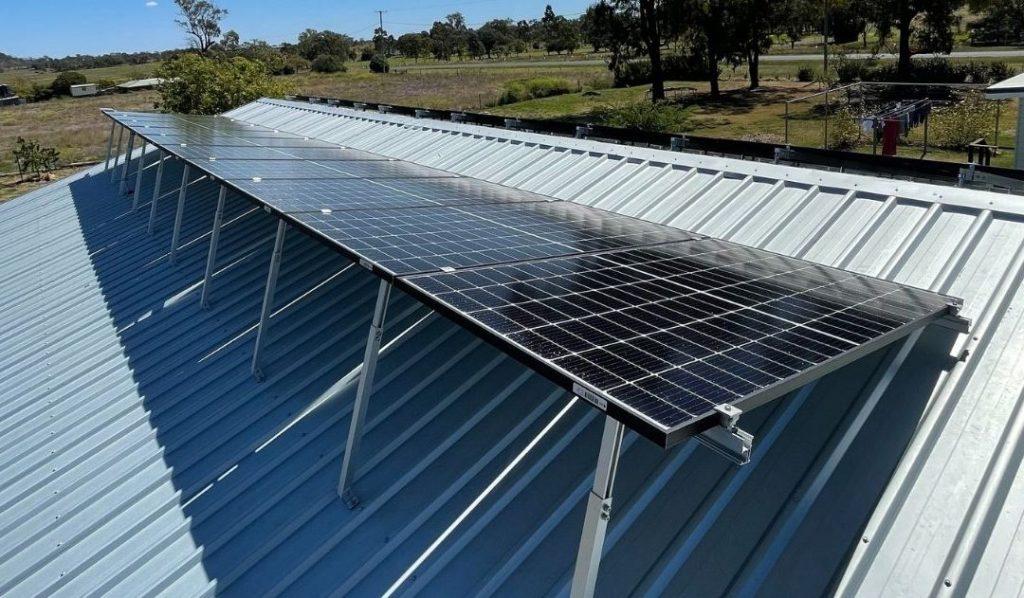Solar energy has emerged as a sustainable and eco-friendly solution to meet our growing energy needs. As technology advances and awareness about environmental issues increases, many homeowners are turning to solar panels to harness the power of the sun. However, not all homes have ideal south-facing roofs for solar panel installation. In such cases, installing solar panels on a north-facing roof can be a viable and efficient alternative.

Understanding Solar Panel Orientation
Before delving into the specifics of installing solar panels on a north-facing roof, it’s crucial to understand the role of panel orientation in solar energy generation. In the northern hemisphere, south-facing roofs typically receive the most direct sunlight throughout the day. This orientation is considered optimal for solar panel installations because it maximizes sun exposure.
North-facing roofs, on the other hand, receive less direct sunlight. While this may seem less than ideal, it doesn’t mean that solar panels on north-facing roofs are ineffective. Solar technology has advanced significantly, making it possible to generate substantial energy even from panels installed on less favorable orientations.
Factors to Consider
- Tilt Angle: To compensate for the reduced sunlight exposure, solar panels on north-facing roofs are often tilted at an angle. This tilt allows panels to capture more sunlight throughout the day by adjusting their position to face the sun’s path. The optimal tilt angle varies depending on your location’s latitude.
- Panel Efficiency: It’s essential to invest in high-efficiency solar panels when installing them on a north-facing roof. These panels can generate more power from limited sunlight, making them suitable for less sunny areas.
- Shade Analysis: Assess any potential sources of shading on your north-facing roof. Trees, nearby buildings, or obstructions can significantly impact your solar panel system’s performance. Trimming trees or adjusting the panel placement to minimize shading is crucial.
Benefits of Installing Solar Panels on North-Facing Roofs
- Optimal Power Generation: While north-facing roofs receive less direct sunlight, they often receive more consistent light throughout the day. Solar panels can still generate a significant amount of power, especially with the right tilt and high-efficiency panels.
- Energy Diversification: Installing solar panels on a north-facing roof diversifies your energy sources. This means you’re less reliant on traditional energy grids and can potentially save more on your utility bills.
- Environmental Impact: Harnessing solar energy, even from a north-facing roof, reduces your carbon footprint. It’s a step towards a more sustainable and eco-friendly lifestyle.
Installation Process
Installing solar panels on a north-facing roof follows a similar process to installations on south-facing roofs:
- Roof Assessment: Begin by assessing the structural integrity of your roof. Ensure it can support the additional weight of solar panels.
- Tilt and Angle Calculation: Determine the optimal tilt angle for your panels based on your location’s latitude. This angle allows the panels to capture maximum sunlight.
- Panel Mounting: Install racking or mounting hardware on your roof. This hardware supports the solar panels and keeps them securely in place.
- Wiring and Inverter Installation: Connect the solar panels through wiring to an inverter. The inverter converts the direct current (DC) produced by the panels into alternating current (AC) suitable for your home’s electrical system.
- Monitoring System: Consider installing a monitoring system that allows you to track your solar panel’s performance. This helps you ensure they are operating efficiently.
- Grid Connection: If you’re planning to feed excess energy back into the grid, you’ll need to arrange a grid connection with your utility provider. This allows you to earn credits or receive compensation for surplus energy.
- Maintenance: Regularly clean and inspect your solar panels to ensure they function optimally. Keep an eye on any shading issues that may arise over time.
Conclusion
Installing solar panels on a north-facing roof is a practical solution for homeowners who may not have the luxury of a south-facing orientation. With the right equipment, angle adjustments, and high-efficiency panels, it’s possible to generate a substantial amount of clean energy while contributing to a greener environment. As solar technology continues to advance, north-facing roofs are becoming increasingly viable options for solar panel installations.



Leave a Reply